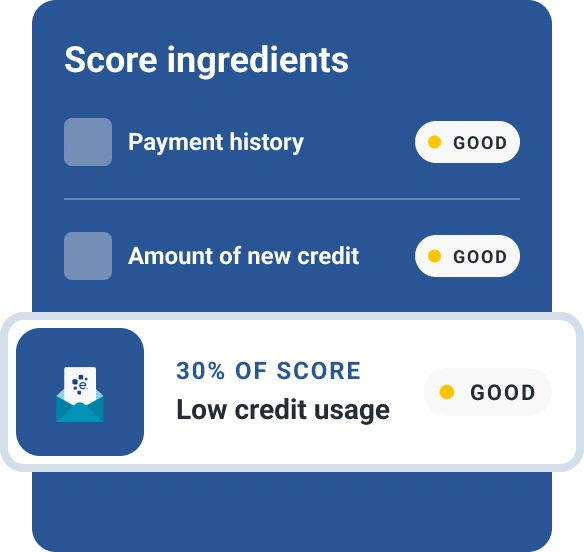How Does Credit Card Purchase Protection Work?

Credit card purchase protection can be a valuable perk if your card offers it. The benefit helps you replace an item you've purchased with your card if it's damaged, stolen or lost. Depending on the type of card you have and its issuer, though, the terms and conditions of this insurance protection can vary widely.
Also, while the perk can be helpful to cardholders who take advantage of it, many credit card issuers have stopped offering it. If your card has it or you're considering one that does, here's what you should know to take full advantage.
What Is Purchase Protection?
Purchase protection will reimburse you to replace an eligible item you've purchased if it's lost, stolen or damaged accidentally within a predetermined period—typically 60 to 120 days.
Depending on the card and its issuer, the terms and limits can vary. For example, you may get up to $500 per claim, with a yearly or lifetime limit of $50,000.
The amount you're eligible to receive can also vary. With American Express, for instance, you'll receive the lesser of the cost to repair the item, the cost to replace it or a complete reimbursement.
Purchase protection programs also have some limitations on the types of purchases that are covered. A few examples of purchases that aren't typically protected include:
- Perishable items
- One-of-a-kind, antique or previously owned items
- Motorized vehicles
- Traveler's checks, tickets, rare stamps or coins
There are also some exclusions for what caused you to lose the item or its damage or theft, which can include:
- Acts of war
- Fraud, abuse or illegal activity by the cardholder
- Carelessness in safeguarding the item
- Theft from baggage not carried by hand
Make sure to read your card's benefits guide to get the full scoop on what is and isn't covered. Purchase protection is typically offered as secondary coverage, meaning it kicks in after other eligible insurance (such as renters or homeowners insurance) or manufacturer or vendor guarantees are used.
Finally, it's important to note that purchase protection is different from price protection, another form of credit card insurance. If you buy an eligible item and the price drops within a set period, price protection can make it possible to get reimbursed for the difference.
How Do You Use Credit Card Purchase Protection?
If you believe you qualify for your credit card's purchase protection benefit, it's important to know the details of how approval works and the steps to complete the process. Again, terms can vary depending on your card and the card's issuer.
In general, though, you'll need to file a claim within a set period after the date of the loss—say, 90 days or as soon as reasonably possible. You'll also need to provide proof of the loss, which can include:
- The original itemized receipt
- The billing statement that includes the purchase on your card
- Insurance declaration forms from other insurance policies that may cover the loss
- A photograph or a repair estimate by an authorized repair facility
- A police report, if the item was stolen or vandalized
You may also be required to send the damaged item itself. Once you've completed all of the steps and you're eligible to file a claim, the benefits administrator will provide payment based on the terms of the agreement.
Which Issuers Offer Purchase Protection?
Fewer major credit card issuers are now offering purchase protection as a credit card perk. Also, while some card issuers may offer it on some of their credit cards, it may not be a universal benefit across all of their card options.
As you shop around and compare credit cards from each of these card issuers, read over each card's benefits guide, which will give you more details about what is and isn't covered, as well as the claim limits.
That said, it's also important to consider each card as a whole. If a card has excellent purchase protection but doesn't offer other perks you're looking for, or the best rewards for your spending habits—something that, unlike purchase protection, affects your daily usage—it may not be worth it.
What Additional Protections and Perks Do Credit Cards Offer?
Depending on the credit card, you may have access to a suite of perks or just a few. Here are some of the more common credit card benefits you can expect to see as you're researching new card options:
- Price protection
- Extended warranty coverage
- Return protection
- Cellphone protection
- Travel insurance
- Rental car insurance
- Trip cancellation or interruption insurance
- Trip delay insurance
- Baggage delay insurance
- Lost luggage reimbursement
- Emergency travel assistance
- Concierge services
All of these benefits can help you when you use your card to shop or travel. Keep them in mind as you compare different card options, and make sure you know which perks your current card offers, so you can take full advantage of them.
Know Your Credit Score Before You Apply for a New Card
As you compare different credit card options that offer purchase protection and other benefits, it's important to only apply for cards that you have good odds of getting approved. Check your credit score and report before you apply for any credit card to get an idea of where you stand. Most of the best credit cards require good or excellent credit, which starts at a FICO® ScoreΘ of 670. You can find out which cards you may be matched to using tools from Experian.
If your score needs some work, your credit score risk factors will tell you what may be hurting your score and how you can address it. It can take time to improve your credit score, but the effort will pay off through better credit card rewards and benefits.
Don’t apply blindly
Apply for credit cards confidently with personalized offers based on your credit profile. Get started with your FICO® Score for free.
See your offersAbout the author
Ben Luthi has worked in financial planning, banking and auto finance, and writes about all aspects of money. His work has appeared in Time, Success, USA Today, Credit Karma, NerdWallet, Wirecutter and more.
Read more from Ben

